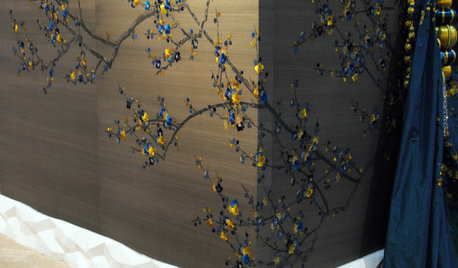What is this mold?
sun_worshiper
10 years ago
Related Stories

REMODELING GUIDESCrown Molding: Is It Right for Your Home?
See how to find the right trim for the height of your ceilings and style of your room
Full Story
KITCHEN DESIGN9 Molding Types to Raise the Bar on Your Kitchen Cabinetry
Customize your kitchen cabinets the affordable way with crown, edge or other kinds of molding
Full Story
DISASTER PREP & RECOVERYHow to Combat Mold in a Flooded House
Before you rebuild or restore your water-damaged home, take these steps to keep mold at bay
Full Story
REMODELING GUIDESFrame Your Views With Great Moldings and Casings
How to Work With Trim to Give Your Space Depth and Interest
Full Story
REMODELING GUIDESDesign Details: Moldings — or Not?
16 new and unusual ways to trim your doors, floors and ceilings
Full Story
TRIMMolding: Add Texture by Detailing Your Detail
Take the Architectural Accent to the Next Level with These Extra Elements
Full Story
DESIGN DICTIONARYDentil Molding
Notched rectangular wood blocks carved into molding give it a toothy appearance
Full Story
DINING ROOMSWays with Moulding in the Dining Room
The Design Detail Adds Drama to These Dining Areas
Full Story
STORAGEBookcases and Floating Shelves That Break the Mold
Linear horizontal shelves have their place, but you can also get creative. Here are some ideas to spark inspiration
Full StorySponsored
Zanesville's Most Skilled & Knowledgeable Home Improvement Specialists
More Discussions







HU-17497
macroclemys
Related Professionals
Cary Landscape Architects & Landscape Designers · Deer Park Landscape Architects & Landscape Designers · Prairie Ridge Landscape Architects & Landscape Designers · Saint Matthews Landscape Architects & Landscape Designers · Bedford Landscape Contractors · Camp Verde Landscape Contractors · Cedar Hill Landscape Contractors · Cockeysville Landscape Contractors · Emmaus Landscape Contractors · Fort Hunt Landscape Contractors · Fort Worth Landscape Contractors · Middletown Landscape Contractors · Glenvar Heights Swimming Pool Builders · Jericho Swimming Pool Builders · Phoenix Swimming Pool Builderskaboehm (zone 9a, TX USA)
sun_worshiperOriginal Author
kaboehm (zone 9a, TX USA)
sun_worshiperOriginal Author